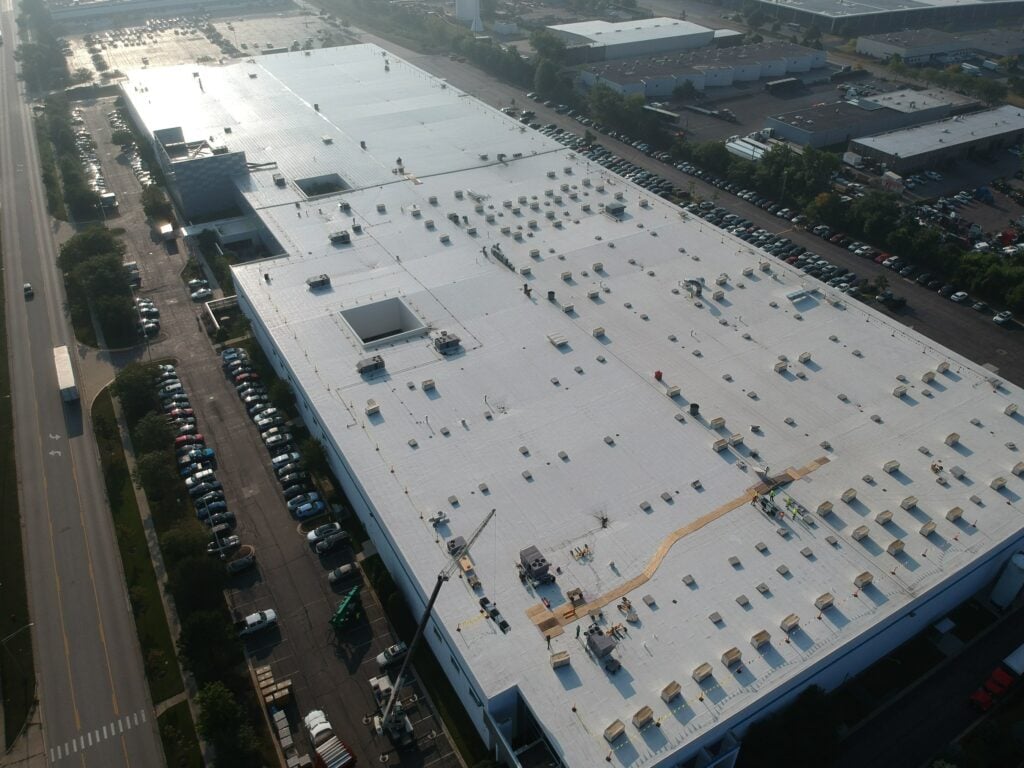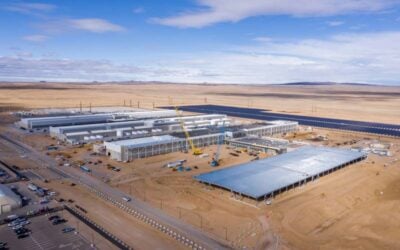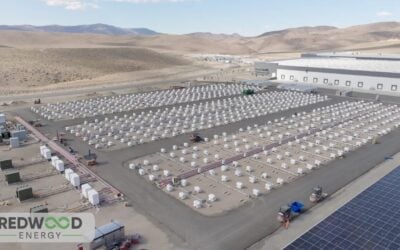
This edition of news in brief from around the world in energy storage focuses on small-scale but potentially significant deployments.
26 August 2021: Flywheel, flow battery at power electronics company HQ’s solar microgrid
Enjoy 12 months of exclusive analysis
- Regular insight and analysis of the industry’s biggest developments
- In-depth interviews with the industry’s leading figures
- Annual digital subscription to the PV Tech Power journal
- Discounts on Solar Media’s portfolio of events, in-person and virtual
US electric power equipment provider G&W Electric has begun work on a microgrid project that will combine flywheel and flow battery energy storage with a bi-facial rooftop solar PV array and other technologies at its Illinois headquarters.
The new microgrid will be able to keep G&W Electric’s facility running with “uninterrupted premium power” to support critical operations and customers in the event of a grid outage, G&W Electric chairman and owner John Mueller said.
The company’s operations were “completely shut down” for several hours during an outage a couple of years ago, leading G&W Electric to recognise the financial benefits of the microgrid, he said. The system will also participate in the PJM Interconnection frequency regulation market.
Along with 6,000 solar modules, the microgrid includes a 1.3MVA flywheel which will provide ride-through power and a 2MW flow battery. Together the storage technologies can supply 3MW of power for close to two hours. The microgrid will also have G&W Electric’s own power electronics technology and fallout location isolation and service restoration (FLISR) distribution automation capability to switch over to different loads.
25 August 2021: Egypt agricultural microgrids could get Azelio’s thermal energy storage ‘pods’
Thermal energy storage startup Azelio’s renewable energy storage units have been ordered on a conditional basis for use in a sustainable agriculture project in Egypt.
Azelio’s TES.POD systems store heat in a phase change material (PCM) made from recycled aluminium warmed to 600°C, which is then converted to electricity using a Stirling Engine. Intended to store energy for up to 13 hours at low-cost and designed for use in conjunction with solar PV, the company began receiving its first commercial orders last year.
Last week, Azelio said that, conditional on the results of an ongoing techno-economic feasibility study, developer Engazaat Development will purchase 20 TES.POD systems totalling 3.3MWh of storage capacity. They will be used in a mini-grid which will supply farmers at the Moghra Oasis in Egypt with up to 85% of their energy from renewable sources, lowering local dependency on diesel, energy costs and greenhouse gas (GHG) emissions all at the same time.
“Capitalising on their superior energy storage technology we aspire with Azelio to launch a unique business model that has the potential to transform the livelihood of small farmers in the Egyptian Sahara Desert, the biggest sand ocean on the planet,” Engazaat CEO Muhammad El Demerdash said.
25 August 2021: More community battery action in Australia
Electricity distribution company Powercor will install a 150kW / 388kWh battery storage system in Tarneit, west Melbourne, and along with fellow distribution company CitiPower is seeking further opportunities to deploy community batteries in the state of Victoria, Australia.
Supported by AU$800,000 (US$580,792) of funding from the Victorian Government’s Neighbourhood Battery Initiative, the Tarneit community battery systems allow residents with solar PV to share their surplus energy with neighbours and the cost of a shared battery to help stabilise local electricity networks is thought to be cheaper than individual homeowners installing their own devices.
While that battery system is scheduled to go into operation by June next year, CitiPower and Powercor are also seeking sites in four other Victoria regions to site installations. The Neighbourhood Battery Initiative is in this case funding a AU$150,000 study into opportunities to deploy batteries in areas including Melbourne’s Central Business District.
It’s the latest in a wave of community battery studies, pilot projects and installations across Australia over the past year or two.






